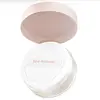What's inside
What's inside
 Key Ingredients
Key Ingredients

 Benefits
Benefits

 Concerns
Concerns

 Ingredients Side-by-side
Ingredients Side-by-side

Silica
AbrasiveAluminum Starch Octenylsuccinate
AbsorbentMica
Cosmetic ColorantHydrogenated Polyisobutene
EmollientPhenoxyethanol
PreservativeEthylhexylglycerin
Skin ConditioningHdi/Trimethylol Hexyllactone Crosspolymer
Boron Nitride
AbsorbentNylon-12
Butylene Glycol
HumectantTriethoxycaprylylsilane
Water
Skin ConditioningGlycerin
HumectantAnthemis Nobilis Flower Extract
MaskingHydroxyacetophenone
AntioxidantCentella Asiatica Extract
CleansingSalicylic Acid
MaskingHamamelis Virginiana Leaf Extract
Skin ConditioningCamellia Sinensis Leaf Powder
ExfoliatingCI 77891
Cosmetic ColorantCI 77492
Cosmetic ColorantCI 77491
Cosmetic ColorantCI 77499
Cosmetic ColorantSilica, Aluminum Starch Octenylsuccinate, Mica, Hydrogenated Polyisobutene, Phenoxyethanol, Ethylhexylglycerin, Hdi/Trimethylol Hexyllactone Crosspolymer, Boron Nitride, Nylon-12, Butylene Glycol, Triethoxycaprylylsilane, Water, Glycerin, Anthemis Nobilis Flower Extract, Hydroxyacetophenone, Centella Asiatica Extract, Salicylic Acid, Hamamelis Virginiana Leaf Extract, Camellia Sinensis Leaf Powder, CI 77891, CI 77492, CI 77491, CI 77499
Talc
AbrasiveNylon-12
Polymethylsilsesquioxane
Magnesium Myristate
Silica
AbrasiveBoron Nitride
AbsorbentPhenyl Trimethicone
Skin ConditioningDimethicone
EmollientCaprylyl Glycol
EmollientEthylhexylglycerin
Skin ConditioningTriethoxycaprylylsilane
CI 77492
Cosmetic ColorantCI 77491
Cosmetic ColorantCI 77499
Cosmetic ColorantTocopherol
AntioxidantNiacinamide
SmoothingWater
Skin ConditioningButylene Glycol
Humectant1,2-Hexanediol
Skin ConditioningCopper Tripeptide-1
Skin ConditioningAcetyl Hexapeptide-8
HumectantTalc, Nylon-12, Polymethylsilsesquioxane, Magnesium Myristate, Silica, Boron Nitride, Phenyl Trimethicone, Dimethicone, Caprylyl Glycol, Ethylhexylglycerin, Triethoxycaprylylsilane, CI 77492, CI 77491, CI 77499, Tocopherol, Niacinamide, Water, Butylene Glycol, 1,2-Hexanediol, Copper Tripeptide-1, Acetyl Hexapeptide-8
Ingredients Explained
These ingredients are found in both products.
Ingredients higher up in an ingredient list are typically present in a larger amount.
Boron Nitride is compound consisting of boron and nitrogen. It is used to absorb oil and modify adherence/ slip in products.
This means it is often used in makeup products to help them last longer.
Butylene Glycol (or BG) is used within cosmetic products for a few different reasons:
Overall, Butylene Glycol is a safe and well-rounded ingredient that works well with other ingredients.
Though this ingredient works well with most skin types, some people with sensitive skin may experience a reaction such as allergic rashes, closed comedones, or itchiness.
Learn more about Butylene GlycolCi 77491 is also hydrated iron III oxide. It's sole purpose is to give a red/pink hue to products.
Iron III oxides are classified as inorganic chemicals for coloring.
Synthetically created Ci 77491 is considered safer than those naturally found. This is because the synthetically created version may contain less impurities. Iron oxides are generally non-toxic and non-allergenic.
Learn more about CI 77491Ci 77492 is also hydrated iron III oxide. It's sole purpose is to give a yellow hue to products.
Iron III oxides are classified as inorganic chemicals for coloring.
Synthetically created Ci 77492 is considered safer than those naturally found. This is because the synthetically created version may contain less impurities. Iron oxides are generally non-toxic and non-allergenic.
Learn more about CI 77492Ci 77499 is also hydrated iron III oxide. It is created from mixing red and black iron oxides. This helps give shades of darkness to a product.
Iron III oxides are classified as inorganic chemicals for coloring.
Ethylhexylglycerin (we can't pronounce this either) is commonly used as a preservative and skin softener. It is derived from glyceryl.
You might see Ethylhexylglycerin often paired with other preservatives such as phenoxyethanol. Ethylhexylglycerin has been found to increase the effectiveness of these other preservatives.
Nylon-12 is a polymer. It is derived from 12-aminododecanoic acid, an omega-amino fatty acid
According to a manufacturer, it is a talc substitute. Like talc, nylon-12 gives products a satin feel. The manufacturer also claims this ingredients does not block pores and has moderate oil absorption.
This ingredient may not be reef-safe.
Learn more about Nylon-12Silica, also known as silicon dioxide, is a naturally occurring mineral. It is used as a fine, spherical, and porous powder in cosmetics.
Though it has exfoliant properties, the function of silica varies depending on the product.
The unique structure of silica enhances the spreadability and adds smoothness, making it a great texture enhancer.
It is also used as an active carrier, emulsifier, and mattifier due to its ability to absorb excess oil.
In some products, tiny microneedles called spicules are made from silica or hydrolyzed sponge. When you rub them in, they lightly polish away dead skin layers and enhance the penetration of active ingredients.
Learn more about SilicaTriethoxycaprylylsilane is a silicone used to bind and stabilize ingredients.
As an emulsifier, it helps prevent ingredients from separating. This can help elongate the shelf life of products.
Triethoxycaprylylsilane is often used to coat mineral sunscreens ingredients to help give a better feel. It also helps reduce oxidative stress in sunscreens.
Learn more about TriethoxycaprylylsilaneWater. It's the most common cosmetic ingredient of all. You'll usually see it at the top of ingredient lists, meaning that it makes up the largest part of the product.
So why is it so popular? Water most often acts as a solvent - this means that it helps dissolve other ingredients into the formulation.
You'll also recognize water as that liquid we all need to stay alive. If you see this, drink a glass of water. Stay hydrated!
Learn more about Water